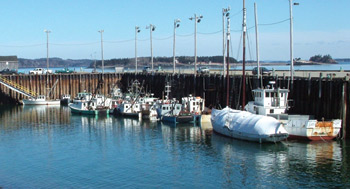As Magnuson Unfolds
LAPP's and Local Control?
by Jon Keller
|
On January 12, 2007 President Bush signed into law the Magnuson-Stevens Fishery Conservation and Management Reauthorization Act of 2006 (MSA). A long-awaited continuation of the original 1976 MSA, the Reauthorization aspires to rethink and rebuilt America’s fisheries—from improving law enforcement to putting a firm end to overfishing.
Managed by the National Marine Fisheries Service, one of the Magnuson-Stevens’ most controversial endeavors is the implementation of Limited Access Privilege Programs (LAPPs) in federally managed fisheries, particularly the multi-species fisheries such as groundfish.
“The Act will help us double the number of limited-access privilege programs by the year 2010,” said a White House spokesperson following Bush’s signing of the act.
LAPPs are basically a quota system, which first came to the commercial fisheries as “catch shares” in New Zealand in 1986. Since then, quotas have made their way around the world, from Iceland to British Columbia. LAPPs cover a myriad of systems, including rationalization, Individual Transferable Quotas (ITQs), Individual Fishing Quotas (IFQ), and Community Based Fishery Management (CBFM).
The Tragedy of the Commons
According the group Environmental Defense, the failure of the fisheries stems from managing fisheries as commons, leading to a spiral of depletion as fishermen work harder to catch dwindling numbers of fish. The result, they say, is sometimes the collapse of entire fishing fleets.
|

The difference between the language in the Magnuson Stevens Act and how to implement it is huge. The points system and area management (the Maine proposal) have been brought forward for groundfish. The later seeks to preserve the small boat fishery and local management. Photo: Fishermen's Voice |
|
|
|
|
Sea Bird Bait
by Capt. J.W. Collins
|
The following was taken from the UNITED STATES FISH COMMISSION: REPORT OF THE COMMISSIONER 1882. Captain J.W. Collins wrote the following in the late 1870’s and early 1880’s. It appears for the most part as it was written. The scientific names for birds, etc., have been deleted.
Notes on the habits and methods of capture of various species of sea birds that occur on the fishing banks off the eastern coast of North America, and which are used as bait for catching codfish by New England fishermen.
For many years after the introduction of trawl-line fishing in New England birds were extensively used for bait to eke out the supply obtained from other sources, and even prior to the time when trawls came into use old fishermen say that they caught birds on the banks with which they baited their hand-lines. Several varieties of birds were obtained for bait, principal among which may be mentioned the hagdons (Puffins); the jaegers, of several species; fulmars, gulls, and petrels or Mother Carey chickens.
continue
|
| A shack-fishing vessel stayed on the Bank until she secured her catch, and depended solely upon getting her bait on the ground. Photo: US Fish Commission |
|
|

